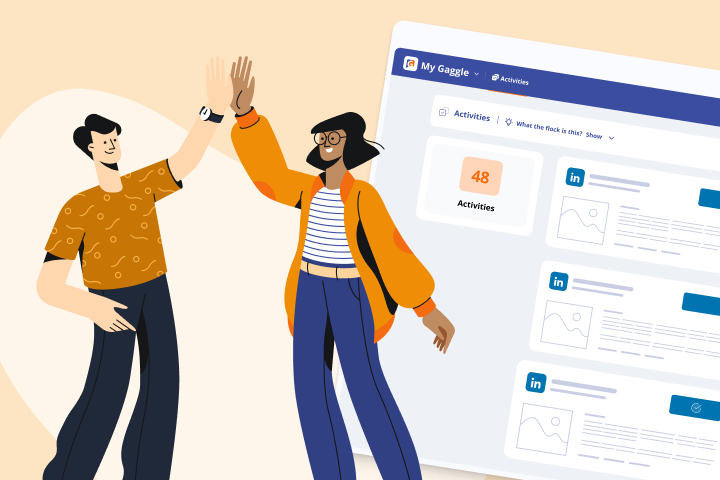Recommendations from individual people are much more influential than advertising messages from a brand.
While most brands pour money into paid advertising campaigns to build brand loyalty and convert more customers, recruiting individual people with loyal audiences to promote the brand for you is often much more effective.
These individuals are brand ambassadors, and they spread the word about your brand to their friends.
In this post, we'll explain what a brand ambassador is, the benefits of working with brand ambassadors, how to select brand ambassadors, and some guidelines you can use to work with brand ambassadors.
What Is a Brand Ambassador?
Brand ambassador definition: an individual who actively promotes a brand to their friends and followers. Brand ambassadors usually receive an incentive to promote your brand, like free products, cash bonuses, or discounts.
The most effective brand ambassadors are usually community leaders who have earned your ideal audience's trust and are savvy at strategically promoting products and services.
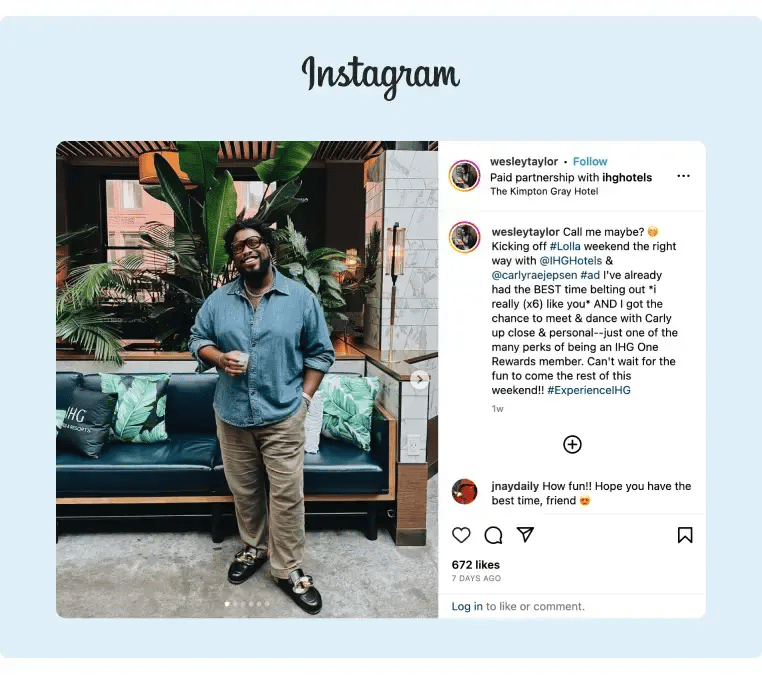
While many think influencers are brand ambassadors, most ambassadors are just community leaders who genuinely love your brand. Some excellent brand ambassador examples include loyal customers, employees, and partner brands.
What Is a Brand Ambassador’s Job?
The brand ambassador's role is to promote brands to target audiences.
How to promote a brand as a brand ambassador is something both the brand and the brand ambassador need to consider. It might include spreading the brand's mission and values, increasing awareness for a new product or service, or even helping to promote an important company announcement.
Brand ambassadors often promote the brand online to their social media following or in person through community clubs and organizations.
Benefits of Having Brand Ambassadors
Here are just a few reasons why brand ambassadors are among the most underrated marketing partners that can significantly move the needle for your business.
Increase Brand Awareness and Loyalty
If your brand ambassadors are consistently mentioning your product or service, your brand awareness will grow exponentially.
In addition, if potential customers regularly see your brand ambassadors using your products or services, you’re essentially getting free brand impressions.
For example, if you go to yoga and always see the yoga teacher wearing Lululemon clothes, you might notice this and eventually decide to buy Lululemon clothes – even if the teacher never actively promotes the brand.
This is because most people want to mimic the leaders they respect, so even if the leader never actively promotes the brand, it still sends a strong message that Lululemon is the cool brand their leader trusts. As a result, you also build brand loyalty as customers want to be part of your community.
Reduce Marketing Expenses
Building trust with potential customers through branded marketing campaigns usually requires multiple interactions. Unfortunately, each interaction requires money to initiate, regardless of whether you're using paid or organic marketing campaigns.
Depending on the complexity of your product, this also usually increases the average time to close a new customer.
In contrast, brand ambassadors are typically happy to recommend your product in exchange for a free sample, discount, or cash bonus.
@dermguru Exactly how to apply snail mucin according to a dermatologist #snailmucin #snailmucinessence #snailmucinskincare #howtousesnailmucin #dermtok #dermguru #skintok
♬ original sound - Dermguru
Example: A dermatologist talking about how to apply snail mucin.
These incentives are cheaper than most multi-touch marketing campaigns. Brand ambassadors also tend to drive higher conversions since a product/service recommendation from a trusted source is much more compelling than a biased branded marketing messaging.
As a result, you can reduce your average customer acquisition cost, which allows you to either reduce overall marketing expenses or maintain the same budget and acquire more right-fit customers.
Increase Customer Lifetime Value (CLV)
The true value of a customer isn’t just the profit made after they purchase a product or service from your brand. Instead, the value of a customer is the total profit they generate for your brand over their entire lifetime.
Most companies rely heavily on remarketing campaigns to bring customers back to their brand and incentivize them to buy again to increase CLV.
However, if you partner with brand ambassadors who constantly talk about your brand and use your products, they’ll do the remarketing for you and keep your brand top-of-mind with your ideal customers.
As a result, happy customers are more likely to return and spend more with your brand.
Collect More Customer Feedback
Most brands rely on customer surveys and customer success teams to gather feedback and better understand their customers.
The problem with customer surveys is that it can be costly to generate enough responses, and it’s difficult to ask follow-up questions, limiting the quality of your data.
In addition, customer success teams often only deal with the disgruntled subset of customers. Unfortunately, these customers might not be the best fit for your brand, so only collecting data based on their opinions and adjusting the product according to their wishes isn’t always a great option.
Brand ambassadors solve these problems because they have direct contact with your customers (both happy and dissatisfied). They can also give you more detailed information on that general audience’s pain points and desires.
This also allows you to see which customer segments (e.g., yoga enthusiasts, runners, CrossFit enthusiasts, etc.) are most profitable and satisfied.
You can also generate more qualitative insights from brand ambassadors by asking them to get on a phone call with you so that you can ask more detailed follow-up questions to your responses.
Increase Social Media Presence
If your brand ambassadors actively promote your brand on social media platforms, you'll naturally also increase social media engagement rates, grow your follower count, and increase your brand's reach.
As a result, your brand ambassador program will not only help your brand get in front of your ambassadors' audience but also increase your overall online presence, amplifying your other marketing efforts.
For example, this single post generated outstanding engagement and helped the brand earn more followers, impressions, and likes:
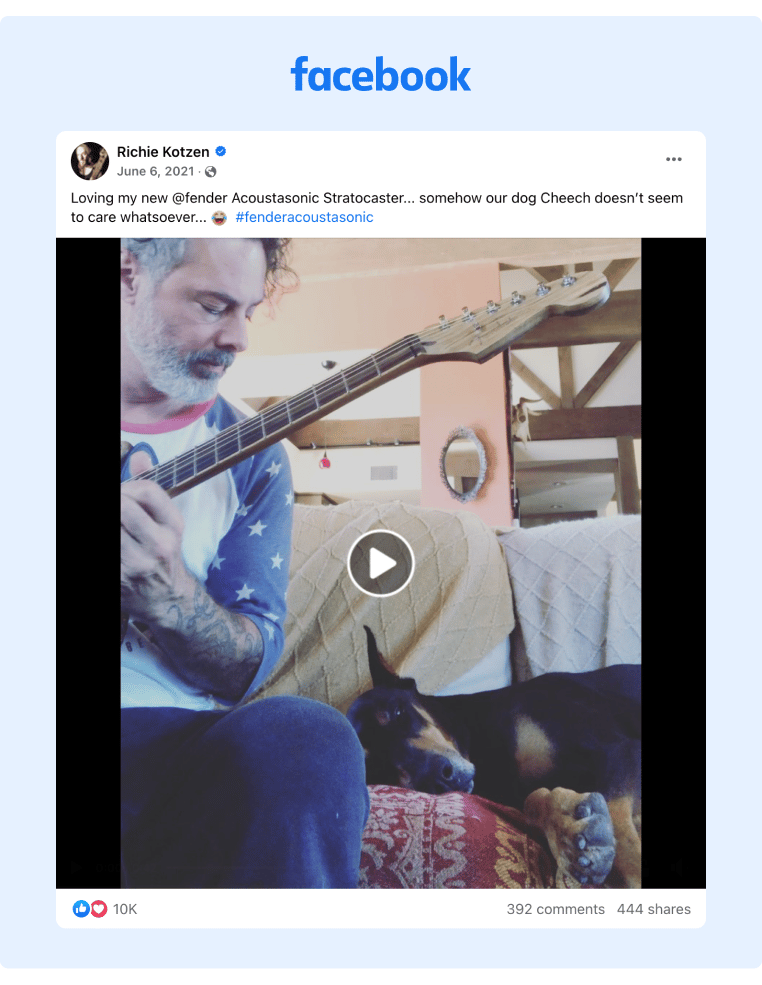
Source: Richie Kotzen
Selecting the Ideal Brand Ambassador
Most companies looking for brand ambassadors assume that the best ones are social media influencers because they have the most reach. But it’s important to remember that both customers and businesses can be a brand ambassador. That’s right, even you and I can be brand ambassadors! But how does that work?
While you can invite popular influencers (e.g. individuals) to be ambassadors for your brand, they might not have the brand ambassador skills (e.g., engaging, knowledgeable, professional, etc.) that you need. Oftentimes, they require either an affiliate link, set contract end date, or a substantial fee to promote your product. As a result, your brand ambassador program becomes more of an influencer marketing campaign.
Additionally, influencers don't always have the most loyal followers, which can lower conversion rates. If the influencers aren't current customers of your brand, it also means that they might not understand your core values and could send the wrong message to their audience.
But the ambassador definition in business may include individual contributors that are thought leaders in their space as well as other businesses. Think about it – some of the best brand ambassadors for a business are their own users who may (willingly) gush all about your business to their target market.
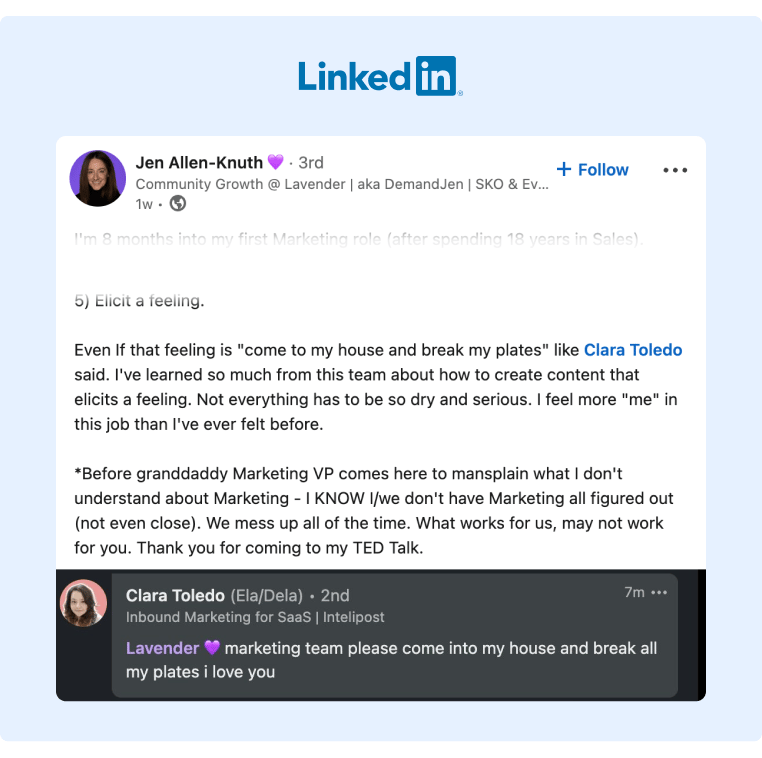
For these reasons, we recommend that you primarily target community leaders with an affinity for your brand, like employees, partners, and loyal customers.
Not only are these individuals typically happy to promote your brand for minimal compensation (free products, a discount code, small prizes, etc.), but they also deeply understand your brand's values and can speak authentically about their experiences with your brand and why they love it.
This authenticity improves conversion rates and general brand sentiment among potential customers. In addition, community leaders tend to have stronger trust with their tribes than influencers.
As a result, they may only need to recommend the product/service to a handful of people to drive plenty of sales, whereas an influencer might need to promote it more heavily to generate the same number of sales.
As you're recruiting brand ambassadors, here are a few things to consider:
- How strong is this person's affinity for your brand?
- How well connected are they with your ideal customer, and how strong is that relationship?
- Are they relatively outgoing and likely to actively promote your brand?
Leveraging Employee Ambassadors
Earlier, we mentioned the brand ambassador meaning and that employees are among the ideal group of brand ambassadors. Here are are a few specific reasons why employee ambassadors are particularly advantageous:
- They have a strong affinity for your brand; they're already dedicating most of their waking hours to its vision and mission.
- They deeply understand your brand's mission, vision, and values, so they'll know how to accurately represent it.
- They also know who your ideal customers are and can highlight how the product/service solves their pain points.
- Employees want to work for successful companies, so they're already incentivized to see the brand succeed. They are more willing to help promote it for minimal rewards (bonuses, prizes, etc.), making them cost-effective advocates.
- It's easier to keep employees actively engaged in your program when you can easily send them reminders and nudges. In contrast, many third-party brand ambassadors get busy, and their engagement drops off, requiring more active re-engagement efforts from your team.
For these reasons, we strongly recommend that you leverage your own employees first and then reach out to other partners and customers to join your brand ambassador program.

As an added bonus, employees are excellent for testing your brand ambassador program. They'll be more understanding of any hiccups in the initial iteration of your program.
Brand Ambassador Guidelines
Once you have brand ambassadors, creating guidelines is important to ensure they accurately represent and effectively promote the brand. Here are a few things to include in your brand ambassador guidelines.
Guidelines on Representing the Brand
These guidelines will help you avoid a potential public relations crisis by providing specific instructions on actions and messages that are acceptable and unacceptable.
In this section, here are a few things you can discuss:
- Off-Limit Topics: You don't want your ambassadors to say anything offensive, misleading, or false statements, so outline that in your guidelines. Also be sure to mention whether or not you permit controversial topics (e.g., political views).
- Incentives: Tell your participants the incentive they can expect for promoting your products/services (bonuses, free products, etc.) and the terms to earn those incentives.
- Content Restrictions: Add a line stating that any content they publish must be their own to avoid copyright issues.
- Agreement Termination: Outline that you reserve the right to terminate the partnership.
Guidelines on Promoting the Brand
Once you have the legal aspects out of the way, set your users up for success by giving them specific promotion instructions.
Here are a few specific instructions you can provide:
- Verbal Promotion: Provide exact scripts they can use to promote your brand and new product launches. Many people feel awkward verbally promoting brands, so giving them specific scripts can help increase adherence.
- Posting Platforms: If you're trying to grow a particular social media account, you may request that your ambassadors post on a specific platform(s).
- Posting Frequency: Set specific posting frequency requirements. This will help set expectations for the effort required to become brand ambassadors, and you can hold them accountable.
It's also a good idea to include examples of social media posts and templates that they can use to ensure they're optimizing posts effectively for maximum reach and engagement.
For example, ensure they include hashtags, craft catchy hooks, and use images. While most social media influencers already know these basics, some of your brand ambassadors may have stronger in-person followings and aren't necessarily social media savvy.
Here’s a great example of a social media post that you can swipe as a template to give to your brand ambassadors. Some things you can highlight that this post does really well is:
- Crafting an excellent hook.
- States the problems it solves.
- States the specific reasons why he likes it.
- The benefits he has received from the tool.
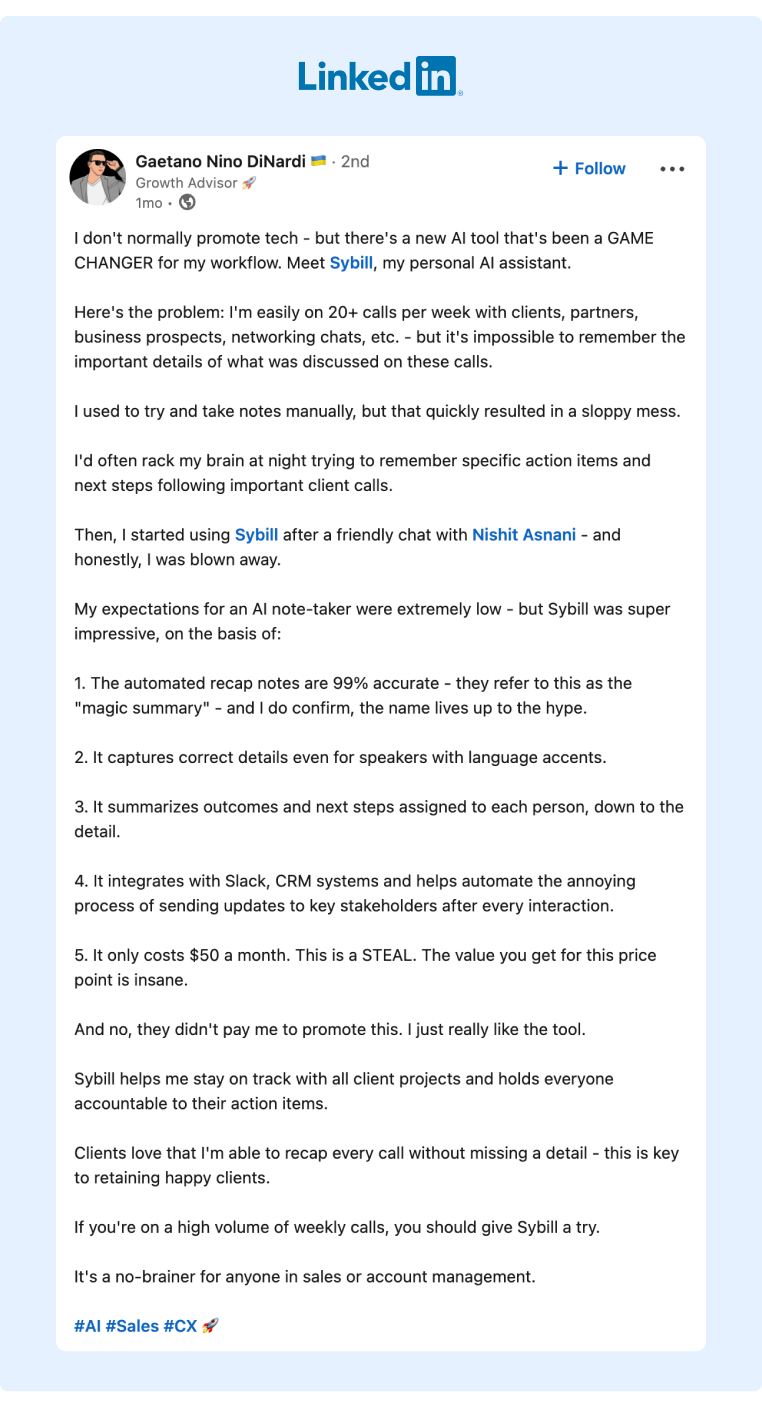
Another option is to use a brand ambassador tool like GaggleAMP and pre-write the text (or at least provide guidelines) to ensure each person hits the key points you want to convey.
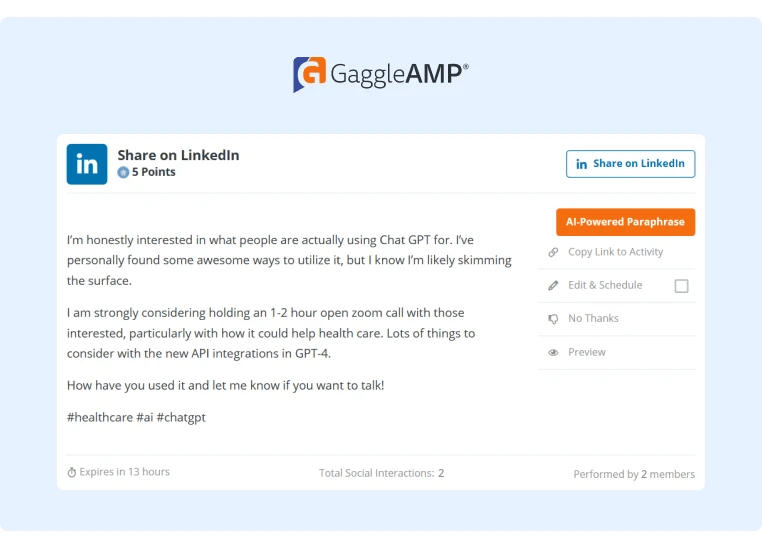
If you’re looking for some inspiration, here are a few examples of brand ambassador guidelines:
- Printful’s Brand Ambassador Terms.
- Plexus’s Brand Ambassador Policies and Procedures.
- LeliaMae’s Brand Ambassador Terms.
Building Your Brand Ambassador Program
Begin your program with your employees to learn the mechanics of managing a brand ambassador program, and then begin reaching out to content creators and other community leaders to participate in your program.
You'll probably have to test different management strategies to find a method that works for your brand and your team, so enroll only a handful of ambassadors in the initial iteration of the strategy.
Smaller brand ambassador programs often use spreadsheets, project management software, and email to manage their programs. Those who are serious about creating a successful brand ambassador program usually opt for brand ambassador software that gives a birds-eye view of all brand advocates' general engagement, and it allows managers to send personalized engagement requests at scale.
This makes it easy to re-engage or remove inactive brand ambassadors and easily identify and reward the most successful brand ambassadors.
GaggleAMP is an example of one of these brand ambassador platforms, though it's designed specifically for employee ambassadors. Here's a brief overview of how it works:
Step 1: You Send Personalized Engagement Activities to Your Employee Ambassadors at Scale
First, you can select an engagement activity for the platform you want employees to engage on (e.g., LinkedIn, Twitter, Facebook, etc.) and the action you want them to execute (like, comment, share, etc.).
Next, you can use the AI-powered writing tool to generate pre-written text so the employee doesn’t have to think of what to say. You can also add a link to a specific post you want them to engage with or share.
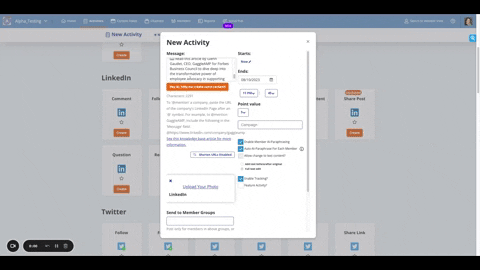
When it’s ready, you can assign it to a specific employee or group of employees.
Step 2: Your Employee Ambassadors Complete the Assigned Engagement Activities and Schedule Them to Publish
After you assign the activity, employee ambassadors receive a notification (via Slack/Microsoft Teams or email), and they can log into their personal Gaggle account to view the activities you've assigned them.
They can then complete the engagement activities (or simply approve the pre-written post) inside their personal Gaggle and schedule them to publish throughout the week.
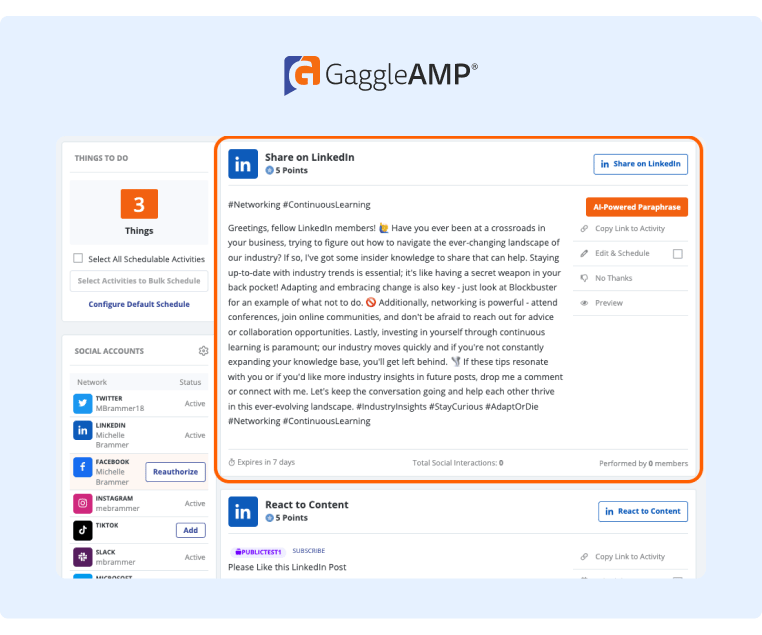
This way, they can complete all of their engagement activities for the week/month in one sitting, which helps boost your program's average engagement and participation rates.
Step 3: Track Engagement Metrics and Program ROI
Finally, you can track specific engagement analytics, like which employees generated the most impressions and engagement. There's also a public leaderboard that ranks employees by participation. This is a fun way to encourage employee engagement and reward your most active users.
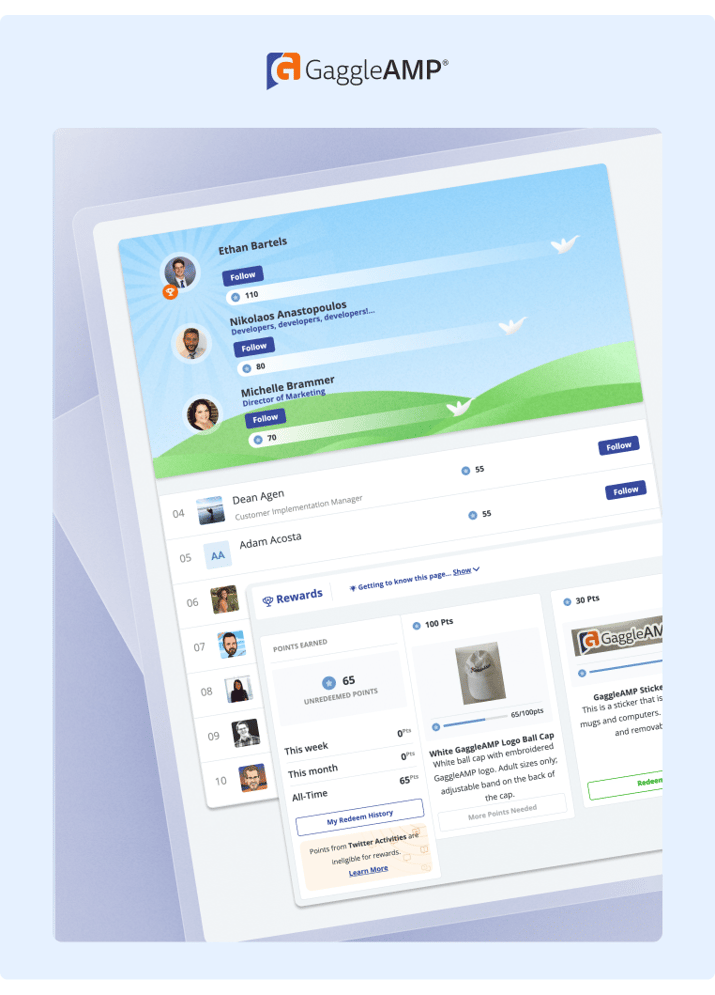
GaggleAMP also offers an advanced analytics dashboard with detailed ROI tracking and benchmark metrics. This makes it easy to track your program's performance and identify the most successful ambassadors, strategies, and campaigns.
You can try GaggleAMP free for yourself today, or schedule a demo to learn more about how it can help you drive sales with employee advocacy.
If you want more detailed information on how to run a brand ambassador program, we have an entire guide dedicated to the topic.
Start Growing With Brand Ambassadors Today
Brand ambassadors can be powerful marketing partners, but many brands find it challenging to keep ambassadors engaged for an extended period of time and ensure they always promote the right initiatives.
To solve these problems, we built GaggleAMP.
It’s an employee advocacy and brand ambassador organizational platform that allows you to create and assign engagement activities so your brand ambassadors always know when and how to promote your brand.
You can try GaggleAMP for free today or schedule a demo to see it in action.



